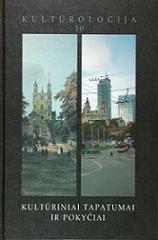Miesto Įvaizdis Kaip Lietuvių Muzikos (Ir Tautos) Atsinaujinimo Problema
The Image Of The City As The Issue Of Lithuanian Musical (And National) Revival
Author(s): Jūratė LandsbergyteSubject(s): Cultural Essay, Political Essay, Societal Essay
Published by: Lietuvos kultūros tyrimų
Keywords: Lithuanian music; Lithuanian national revival; Lithuanian modernism; Vytautas Barkauskas; Eduardas Balsys; Onute Narbutaite; Mindaugas Urbaitis;
Summary/Abstract: Lithuanian culture of the 20th century was marked by a clear confrontation between the urban expansion and rural mental values. The roots of Lithuanian music lie in the folk song, therefore in this area the urban image worked its way with difficulty. Nevertheless, the confronting mental values have branched into several creative trends in contemporary Lithuanian music. It is modernism whose most famous representatives in interwar Lithuania were Vytautas Bacevièius, Vladas Jakubënas, and Jeronimas Kaèinskas (later expatriated to the USA). Modernism and nationality were a poignant dilemma for Lithuanian composers who were trying to answer the question of how a composer of a young and small state could contribute to the world culture. The Lithuanian mentality accepts that it is only the nature, the elements, and the cosmos that are the closest things to the human nature. Urbanism levels off cultures. Lithuanians discovered the city as a phenomenon of the live history possessing regenerative powers for the nation’s life after the statehood was lost in the 20th century. Among the most notable pieces using urban images are musical forms devoted to Vilnius history. The first ones emerged already in the 1970s, during the Soviet period: Vytautas Barkauskas‘ Gloria Urbi and Eduardas Balsys’ Symphony/Concerto coincided with the renaissance of organ. The most important opus on Vilnius history, Centones meae urbi by Onutë Narbutaitë, won the National Award in 1997. The latest futuristic image of the city has apocalyptic meaning in Lithuanian music. Contemporary ballet exists as well – an example of this is Mindaugas Urbaitis‘ Acid City (2002).
Journal: Kultūrologija
- Issue Year: 2003
- Issue No: 10
- Page Range: 294-308
- Page Count: 15
- Language: Lithuanian

